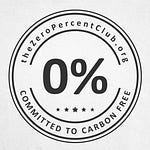In Part I of this series, I talked about the European Union, their moderating effect upon Ukrainian corruption, and their carbon tax implemented as an Emissions Trading System about 10 years ago. Today I go on to discuss the surprisingly advanced state of carbon taxation around the world, including the US. As a reminder, ETS systems are a “Cap & Trade” — a budget for carbon emissions by industry.
Emission Trading Schemes Go Global
I’ve found the scale of Emissions marketplaces and carbon taxes to be surprising in scope. According to the 2022 World Bank Report, there are 68 (!) programs implemented today, covering 23% of global emissions, including a giant spike in 2021 as China’s program came online covering 5% of global emissions. Although the U.S. is not present nationally, New England (RGGI) and California each have their programs, as well as Canada. (Of course, this still leaves 75%+ of emissions as not-yet covered).
In no cases are emissions credits fungible (exchangeable) between programs. I expect that will come much later, once the world has worked out practical and effective standards of quality.
There is a wide range in prices (cost per ton CO2 emitted), but most fall short of the $50-100/ton estimated as necessary to hit net-zero 2050. For example, presently RGGI in New England comes in at $13/ton emitted, where it is capped. Compare that to Sweden and Switzerland’s >$100/ton prices, and the EU-ETS market price of about €90. Note that Germany also has a standalone ETS program, which additively covers land transport, which are not covered by EU-ETS.
And here is the 2022 coverage map:
Although ETS programs are slow to claim victory (conservatively, the price point needs to be $50-$100 in order to hit 1.5°. Estimates go as high as $100/ton), there are some little wins. In countries which are even considering starting a Carbon Tax or ETS program, companies are five times more likely to implement an internal corporate carbon price. The United States is leader in number of companies implementing or planning internal pricing.
This is of course not the end of the picture. US H.R.2307 proposes a revenue-neutral carbon tax, and is advocated for by Citizens Climate Lobby. There are many more regional, state, county, and city resolutions as well - but will have to wait for a followup post.
I thought this state-of-global-ETS overview given on a webinar for Indonesian climate policy was quite good: Video from Ernst & Young - April 2022. If you are surprised to see Indonesia here, it might be helpful to know that they burn a lot of coal, process on-site many raw materials necessary for batteries, and are, as an island nation with a high ratio of coastal to land area, going to be one of the nations most effected by climate change.
The report also acknowledges both that both explicit policy as we’ve been discussing so far and implicit policy affect the carbon prices. Fossil fuel subsidies are one example of an implicit policy. A 2021 study published by Nature Finance shows how different country’s COVID stimulus packages have affected “green” goals.
The Catch - International Trade
Everything discussed so far has had to do with counties or regions enacting regulation within their own borders. This a powerful lever, and can have international leverage as well. For example, Ukraine has built its own ETS compliance with EU standards.
However, Carbon Taxes & Marketplaces can be their own ruin if not balanced against foreign competition. As local taxes go up, business will leave the region. This effect, known as “Carbon Leakage”, is minimal so far as taxes are light, but in order to reach necessary levels, the effects must be stronger.
Now like me you might be wondering: why in the heck would a country tax their own businesses when they could sling down a protective tariff which taxes everyone else instead? This has been discussed in some depth in a This 2010 World Customs Journal Paper. Indeed, the WCO Secretary General is quoted as saying
Protection of the environment is often regarded as a policy matter of other ministries, but the customs community has the effective means to contribute to this increasingly important policy objective — Kunio Mikuriya
And there is precedent with Ozone-depleting substances under the Montreal Protocol. In 1995 the US created what’s known as a Border-Tax-Adjustment (BTA) corresponding to the amount of a material multiplied by how strongly it depletes the earth’s ozone layer. Twenty years later and the ozone crisis is a thing of the past.
The Customs Journal paper discusses how the same BTA mechanism could be used to push back against what’s called “Embedded Carbon” — a somewhat paradoxical term which refers to the amount of carbon emitted into the atmosphere during the manufacture of a raw material.
The difficulty lies in the risk of WTO adjudication for an import tariff which is not coupled with a domestic tax of the same proportion, which could be found in violation of the General Agreement on Tariffs and Trade (GATT, established 1947).
There is however a carveout: GATT Article XX, which is an allowance for rules necessary to protect human, animal, or plant life or health, but a tariff must not constitute “arbitrary or unjustifiable discrimination between countries”, etc. Embedded Carbon Tariff’s have not been litigated at this point, and it is not known which decision would result.
There is one other obvious drawback: Embedded carbon only covers a fraction of global carbon emissions. Even a BTA on Embedded Carbon there leaves significant room for additional incentivization.
Europe’s New Tariff (CBAM)
In July 2021 the European Commission presented a new proposal to reduce & eliminate carbon leakage: a tariff levied on the cost of Embedded Carbon products entering the EU which matches domestic carbon prices. This is called a Carbon Border Adjustment Mechanism.
The plan has gained significant momentum, and as of this article written the 13th of December, it is close to passing. EU-CBAM is designed to backstop the EU-ETS regulation for a meaningful impact on decarbonization, rather than letting industries leave the region and form pollution hotspots, as they say, outside of the environment.
Until October 2023, reporting obligations would only apply. After that importers will need to purchase carbon certificates on an open market, just as domestic producers do on the EU-ETS.
The U.S., in full predictably, is considering responding with both protest and its own version of an import tariff. Of course, the U.S. has much less of a leg to stand on as it would be doing a BTA without corresponding internal tax, but for those desperate for any climate change measure, it could be a step in the right direction. Congressional Research Report R47167 is actually not too dense a read on the subject. And, there are two relevant bills in congress currently: H.R. 2307 and S.2378.
Notably (!), the US has instituted a price on methane emissions with the Inflation Reduction Act. It begins in 2024, starting at ~$30/ton Co2e, and going up to $60 over a few years. See the CRS report R47206. This is a great start.
Closing Thoughts
The case for “viral” tariffs on grid emissions
Part I of post started with me not having an inkling of what ETS is, much less its growing global scope (despite needing higher prices in general). I would have thought that tracking embedded carbon would present an impossible task, and was thinking instead on how we might structure a tariff of energy, for which emissions are more easily tracked due a smaller number of large electricity-generating plants. This seems like a new idea, and in-line with much of what I’ve seen, so I’ll describe the concept here:
Consider that Embedded Carbon only accounts for a fraction of emissions coupled with a product. Even the least energy-intensive product still is manufactured by people who use the electric grid when not at work — we can see on the chart above from Speed & Scale that fully a third of carbon emitted is from grid-based Electricity.
Countries could adopt an import tariff according to the exporter’s grid’s carbon-efficiency. This could be made viral in nature by reducing the tariff on countries which implement a similar tariff on their imports. Ultimately, the tariff is self-limiting as grids become fully de-carbonized.
There are some obvious downsides here of course - one would want to tune it so that trade restrictions don’t damage the global economy at a time when we need the largest possible per-capita productivity — the funds gained would have to be used in a way to offset their own cost. International trade is so important that even a very small rate would produce a large effect.
Non-Partisan Values
Although Climate Change Regulation is typically seen as a “Liberal” issue in the U.S., I see this kind of regulation as aligned with republican values for freedom (produce our energy domestically, don’t import it), and our ability to enjoy the natural world (especially for hunters and what-not). Citizens Climate Initiative has a bit on this:
(Also worth a watch: Ted Halstead introduces The Conservative Case for Carbon Dividends in this talk).
New Law in Values-Based Trade Regulation
This whole area touches on a relatively new area in our legal system: punitive trade rules based not on the product, and not on the country, but upon the technique used to produce the product.
One other similar area jumps to mind - California Prop 12: a ban on pork from pigs raised in crates, passed by referendum of the Californian people, and now being contested by the DOJ on behalf of industrial pig “farmers”.
Both restrict the import of goods based on certain principles, as did the ban on imports of solar panels made with Chinese Slave labor. The connection between trade regulation and social or societal values, I think, could make for an interesting study.
What You Can Do
While the world sorts itself out, you don’t have to sit idly by.
Of course if you like this post, please share it out a bit! You can also write me directly your thoughts or leave a comment below - it’s quite motivating.
In writing this, I’ve learned that across the U.S. and the world, Citizens Climate Lobby is organizing to put a price on carbon, and is accepting volunteers.
Finally, DegreesPod has a three part series on what you can do personally, professionally, and politically to reduce your emissions. This will also be the subject of my next post.
That’s all for now, and I hope you’ve learned something new.
Thanks,
—Peter

















Share this post